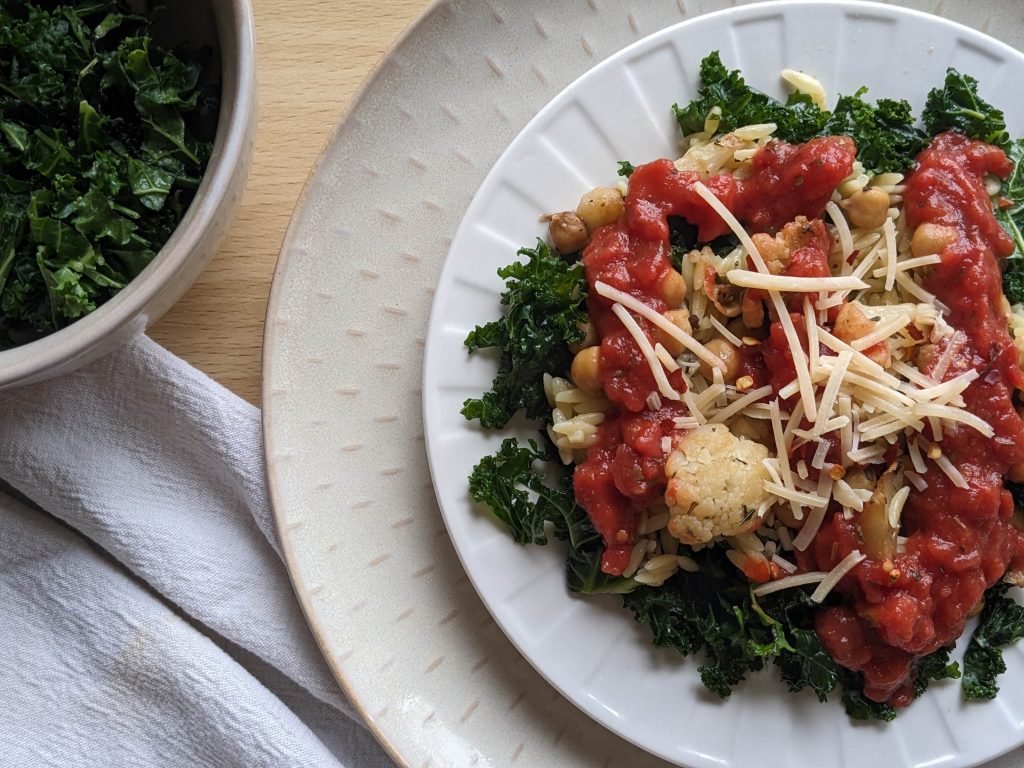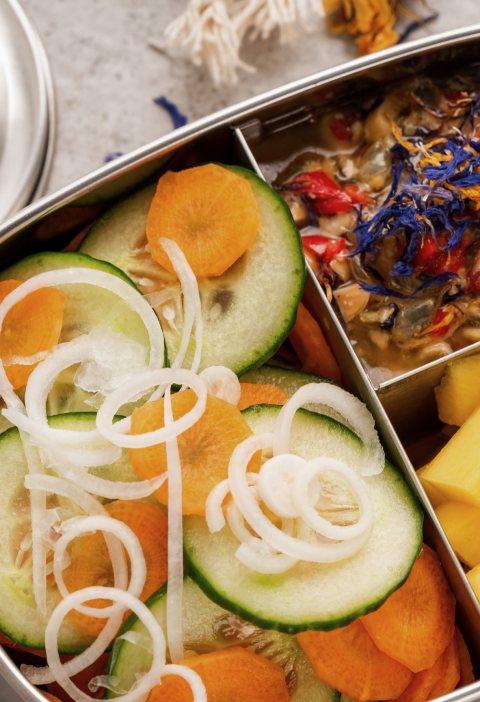I grew up watching my mom meticulously plan meals for our family every week. But even still, when I went off to college it was hard to figure out the whole meal planning / feeding myself thing. Thankfully with time and practice, it got easier. I soon learned that a little planning can help a lot, especially if you’re cooking on a budget.
Here are five easy steps to help you plan budget-friendly and healthy meals!
1. Check your pantry & fridge
One of the first things I do when planning meals for the week is check my fridge. What do I already have? Is there some leftover cabbage from the week before, or some cilantro that’s starting to wilt? If there’s something you need to use up, plan some meals early in the week to make use of what you’ve already got.
You can also take inspiration from items in your pantry. What kinds of grains, beans, sauces and spices do you have? Your meals will cost you less if you make use of the things you already have on hand.
2. See what’s on sale
The next step to plan cheap meals is to check the ads. What food is on sale at your local grocery stores? Particularly pay attention to prices of fruits and vegetables. Planning a meal based on a vegetable is a great way to make sure you get the nutrients you need. If you eat meat, try to stock up when a sale is going on and throw the extra in the freezer.
3. Plan for rollover ingredients
Some recipes just call for a sprinkle of cilantro on top. And before you know it, you have a sad, wilting bunch of cilantro buried in your vegetable drawer! (See step 1 to help with this 😉 )
When planning meals, try to choose recipes that use similar ingredients. For example, if you have a recipe using a little cilantro, find another recipe or two so you can use up the whole bunch. (One of my favorite recipes to use up extra cilantro is this delicious cilantro pesto from She Likes Food.) Or if you make a cabbage slaw for a side one night, find a way to use the rest of your cabbage another night. (I love this yummy Thai quinoa salad from Cookie and Kate.)
Of course, I’m also a big fan of freezing the extras. But if you plan efficiently, you can make sure no ingredient goes to waste!

4. Add some meat-free meals to your meal plan
Meat is getting more expensive every year! A pound of pork chops averages over $4, and ground beef rolls in at over $5 a pound. (For more on food prices in the US, see this page from the US Bureau of Labor Statistics.) While some meat is a little cheaper (about $2/lb for bone-in chicken legs), buying meat for meal after meal can get pricy fast.
Beans, on the other hand, are still an affordable option. There’s a reason “rice and beans” is a classic poor-man’s meal! Dried beans cost $1.70 per pound on average in the US. And that number is a little skewed, because one pound of dried beans is about the equivalent of four cans of cooked beans!
So if you need your dollar to stretch a little farther, try swapping out some of your meat-heavy meals for vegetarian dishes. (Worried about nutrition? Check out my articles on how to get enough protein or enough iron when eating vegetarian!)

(These cauliflower chickpea marinara bowls are an easy and tasty vegetarian option!)
5. Leave out the expensive extras if needed
Lots of recipes will include fun toppings like feta cheese, crushed nuts, avocado, and more. If money is really tight, try leaving the feta off your salad, or eat your enchiladas without the avocado. Find recipes that taste great because of their delicious seasonings and wholesome ingredients, rather than relying on fancy toppings.
Many recipes also call for a lot of cheese, which can get expensive. (Here in Iowa, cheese is around $4 per pound!) Try limiting or leaving out cheese to cut back on cost. This will save you money, but it will also limit your saturated fat intake — it’s a win-win!
Tips for Shopping on a Budget
Now that you’ve planned some budget-friendly meals, it’s time to make your shopping list. Be sure to plan for some healthy snacks on your grocery list so you don’t spend extra on vending machines or on-the-go food! When you go to the store, stick to your list instead of buying extras that you don’t need. Remember: just because something is on sale doesn’t mean you should buy it!
Another helpful way to avoid temptation is to never go shopping on an empty stomach. That way when you see those candy bars eying you in the checkout line, your brain can think a little more clearly. 😉

As you shop for ingredients, be sure to compare the price per ounce. The cost of an ingredient can vary drastically depending on the brand and size you choose. Typically, generic brands will be cheaper.
How to Meal Plan on a Budget
Hopefully it doesn’t take you as long as I did to figure out how to meal plan. 😉 As you plan your meals based on what you have, check the sales, plan for rollover ingredients, and cut back on meat or other expensive toppings, you’ll be able to afford healthy eating, even on a budget.
how to plan meals on a budget
1. check your pantry & fridge
2. see what’s on sale
3. plan for rollover ingredients
4. add some meat-free meals
5. leave out expensive extras







